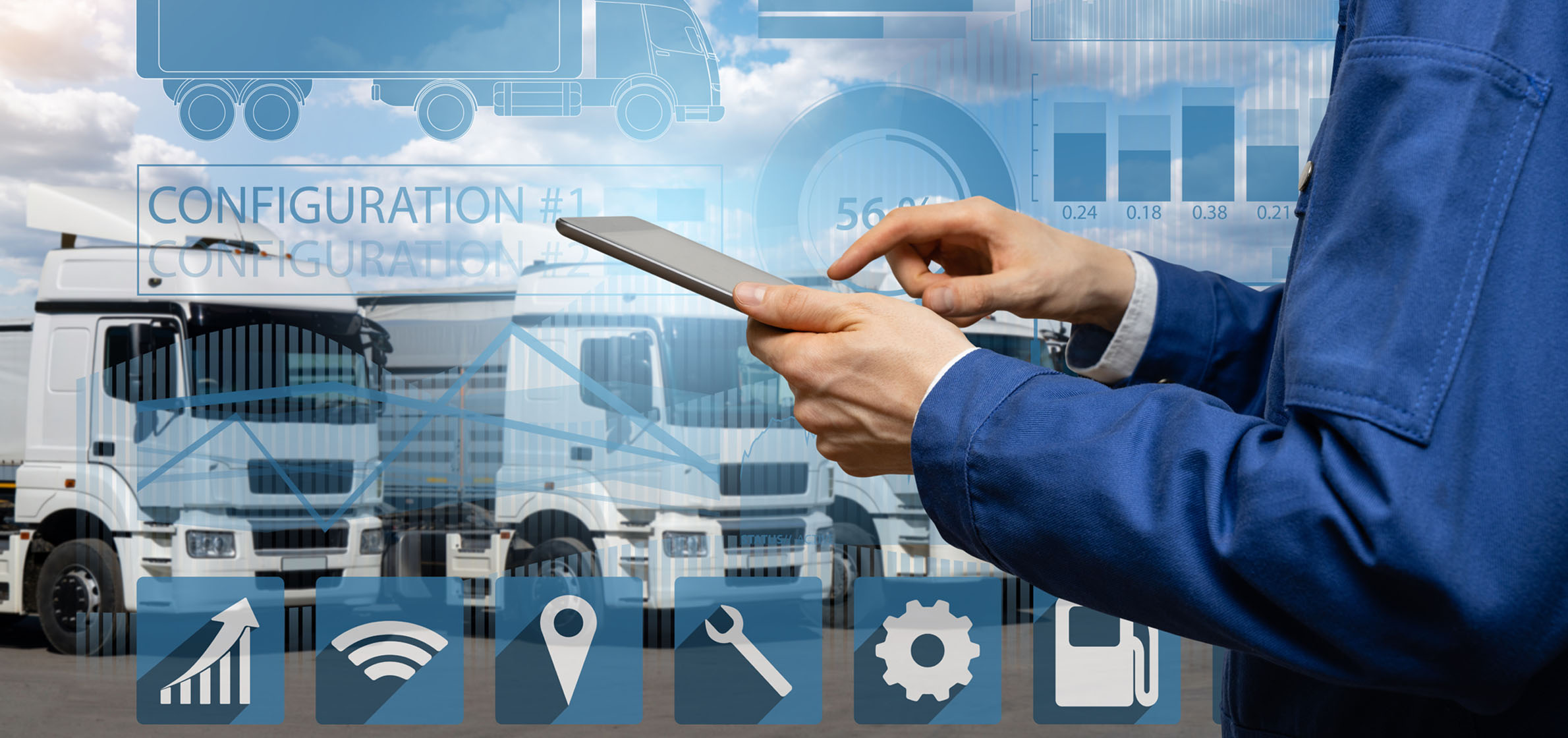
Why Fleet and Asset Telematics?
Fleet and Asset Telematics use telecommunications and informatics to transmit data from vehicles and assets to a central system for analysis. This technology integrates GPS tracking, onboard diagnostics, and various sensors to collect and transmit data on vehicle location, speed, fuel consumption, maintenance needs, and other critical parameters. The collected data is then analyzed to provide actionable insights, helping businesses optimize their fleet and asset management.
Fleet Telematics
- Real-time tracking
Monitor the location and status of your vehicles and assets in real-time, ensuring that you always know where your resources are and how they are being used. - Improved efficiency
Optimize routes, reduce fuel consumption, and minimize downtime by leveraging data-driven insights to streamline your operations. - Maintenance management
Schedule preventive maintenance and monitor the health of your vehicles to reduce unexpected breakdowns and extend their lifespan. - Electronic logging devices
Ensure compliance with industry regulations and generate detailed reports for audits and performance evaluations.
- Cost savings
Reduce fuel consumption, prevent unauthorized use of vehicles, and leverage predictive maintenance to help avoid costly repairs and extend the lifespan of your assets. - Improved productivity
Telematics solutions provide valuable insights into driver behavior and vehicle performance, allowing businesses to identify areas for improvement with real-time data. - Enhanced safety
Monitor driver behavior, such as harsh turning and breaking, and vehicle health to ensure the safety of your drivers and assets by detecting unsafe driving practices and providing feedback to encourage safer behavior. - Better customer service
Businesses can provide more accurate delivery times and improve overall customer satisfaction with real-time tracking and optimized routes.
Asset Telematics
Gain valuable insights and keep precise tabs on your assets to enhance efficiency, reduce losses, and lower expenses.
- Battery or solar powered devices
Extended battery devices ideal for non-powered equipment and vehicles. Solar-powered asset trackers utilize solar energy to operate, providing real-time location and status monitoring. - Geofence boundaries
Be alerted when assets arrive and depart from a customized location boundary. - Climate monitoring
Advanced sensors and automated alert systems provide real-time data such as temperature, humidity, and door open/close, helping businesses maintain compliance, prevent spoilage, and optimize energy efficiency. - Lone worker tracking
GPS tracking that provides dependable safety support by delivering real-time monitoring and immediate SOS alerts for individuals working alone. Ideal for field personnel, delivery drivers, and other independent professionals.
- Enhanced security
Telematics help safeguard your important assets using geofencing and alert systems that provide instant notifications for confirmations, unusual activity, and arrival or departure updates. - Inventory management
Simplifies inventory checks and receive real-time notifications when tagged equipment and supplies move out of range, preventing loss and theft. - Employee safety
Keep track of lone workers’ exact location in real-time to enhance coordination and emergency response. - Prevent spoilage
Keep a consistent temperature to maintain the integrity of assets such as food and vaccines with recorded temperature data.
Applications of Fleet and Asset Telematics
Fleet and Asset Telematics are versatile and can be applied across various industries to enhance operational efficiency and asset management. Here are some common applications:
- Transportation and logistics
Telematics solutions are used to monitor and optimize the movement of goods, ensuring timely deliveries and efficient route planning. Electronic Logging removes manual effort and improves accuracy. - Construction, oil and gas, mining
Telematics technology helps companies track and manage their equipment, ensuring that it is used efficiently and maintained properly. In addition, Telematics reduces environmental impact by assisting in monitoring fuel consumption and emissions. - Public transportation
Public transportation systems use telematics to monitor the location and performance of buses and trains, improving service reliability and passenger safety. - Field services
Field service companies use telematics to manage their fleet of service vehicles, ensuring that technicians arrive on time and are equipped with the necessary tools and information.